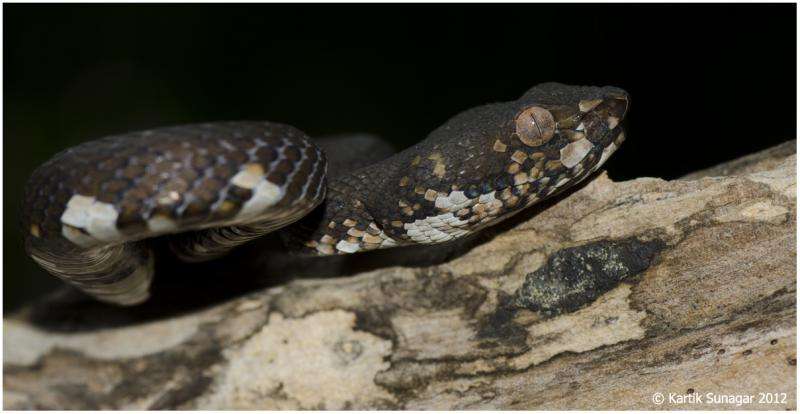Research points to a 'two-speed' evolution of animal venom

In a new study published in the journal PLOS Genetics, scientists at the Hebrew University of Jerusalem have revealed new discoveries about how animal venom evolves.
Venom is a complex mixture of proteins and other toxic chemicals produced by animals such as snakes and spiders, either to incapacitate their prey or to defend against predators. The influence of positive selection (the process by which a protein changes rapidly over evolutionary time scales) in expanding and diversifying animal venoms is widely recognized.
This process was hypothesized to result from an evolutionary chemical arms race, in which the invention of potent venom in the predatory animals and the evolution of venom resistance in their prey animals, exert reciprocal selection pressures.
In contrast to positive selection, the role of purifying selection (also known as negative selection, which is the selective removal of deleterious genetic changes from a population) has rarely been considered in venom evolution.
Moreover, venom research has mostly neglected ancient animal groups in favor of focusing on venomous snakes and cone snails, which are both "young" animal groups that originated only recently in evolutionary timescales, approximately 50 million years ago. Consequently, it was concluded that venom evolution is mostly driven by positive selection.
In the new study, Dr. Yehu Moran at the Hebrew University's Department of Ecology, Evolution and Behavior and the guest scientist Dr. Kartik Sunagar examined numerous venom genes in different animals in order to unravel the unique evolutionary strategies of toxin gene families.
The researchers analyzed and compared the evolutionary patterns of over 3500 toxin sequences from 85 gene families. These toxins spanned the breadth of the animal kingdom, including ancient venomous groups such as centipedes, scorpions, spiders, coleoids (octopus, cuttlefish and squids) and cnidarians (jellyfish, sea anemones and hydras).
Unexpectedly, despite their long evolutionary histories, ancient animal groups were found to have only accumulated low variation in their toxins.
The analysis also revealed a striking contrast between the evolution of venom in ancient animal groups as compared to evolutionarily "young" animals. It also highlighted the significant role played by purifying selection in shaping the composition of venoms.
According to Dr. Yehu Moran, "Our research shows that while the venoms of ancient lineages evolve more slowly through purifying selection, the venoms in more recent lineages diversify rapidly under the influence of positive selection."
The findings enable the postulation of a new theory of venom evolution. According to this theory, toxin-producing genes in young venomous groups that enter a novel ecological niche, experience a strong influence of positive selection that diversifies their toxins, thus increasing their chances to efficiently paralyze relevant prey and predatory species in the new environment.
However, in the case of the ancient venomous groups, where the venom is already "optimized" and highly suitable for the ecological niche, the venom's rate of accumulating variations slows down under the influence of purifying selection, which preserves the potent toxins generated previously.
The proposed "two-speed" mode of venom evolution highlights the fascinating evolutionary dynamics of this complex biochemical cocktail, by showing for the first time the significant roles played by different forces of natural selection in shaping animal venoms.
According to Drs. Moran and Sunagar, "The 'two-speed' mode of evolution of animal venoms involves an initial period of expansion, resulting in the rapid diversification of the venom arsenal, followed by longer periods of purifying selection that preserve the now potent toxin pharmacopeia. However, species that have entered the stage of purification and fixation may re-enter the period of expansion if they experience a major shift in ecology and/or environment."
More information: Kartik Sunagar et al. The Rise and Fall of an Evolutionary Innovation: Contrasting Strategies of Venom Evolution in Ancient and Young Animals, PLOS Genetics (2015). DOI: 10.1371/journal.pgen.1005596
Journal information: PLoS Genetics


















